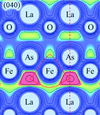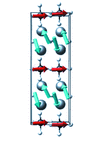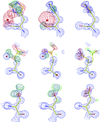issue contents
May 2014 issue

editorial
PHYSICS | FELS
The development of X-ray lasers and their applications in crystallography is described. In the birth of this new field, IUCrJ is ideally positioned to present this research to both specialists in crystallography, and to the wider audience in structural biology.
scientific commentaries
NEUTRON | SYNCHROTRON
Rotational x-ray tracking (RXT) is demonstrated as a promising new tool for investigating previously unobservable motion in crystalline nanoscale colloids. Its potential utility is demonstrated by applying it to measurements of the local viscoelastic properties of a gel–colloid nanocomposite.
research letters
CHEMISTRY | CRYSTENG
Charge-carrier redistribution invoked by enhanced electronic polarization of the As ion was observed in the superconducting phase of iron arsenide.
CHEMISTRY | CRYSTENG
A hierarchical dielectric ordering in ferroelectric Bi2SiO5 was visualized by means of the maximum entropy method combined with electrostatic potential analysis via synchrotron radiation X-ray powder diffraction.
research papers
CHEMISTRY | CRYSTENG
The complete structural transformation of ionic species in the precursor solution, over an amorphous solid and finally into crystalline nanoparticles, is elucidated by in situ investigations under supercritical solvothermal conditions.
NEUTRON | SYNCHROTRON
The method of rotational X-ray tracking is used to probe the microradian rotational motion of individual crystalline colloids in a colloidal gel to determine the viscous and elastic properties.
BIOLOGY | MEDICINE
The dual role of the Protein Data Bank as a repository of all macromolecular structures and as the major source of structural metadata for further analysis is discussed and suggestions are made on how to identify models that contain errors and could potentially degrade the quality of meta analyses.
PHYSICS | FELS
A method to map spin-resolved electron distribution from combined polarized neutron and X-ray diffraction is described and applied for the first time to a molecular magnet and it is shown that spin up density is 5% more contracted than spin down density.



 journal menu
journal menu





 access
access


















